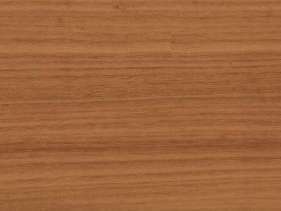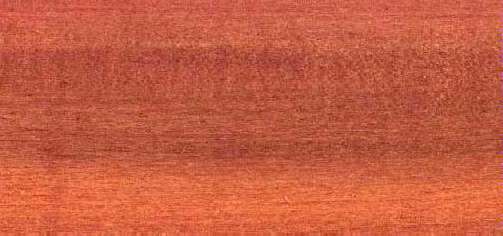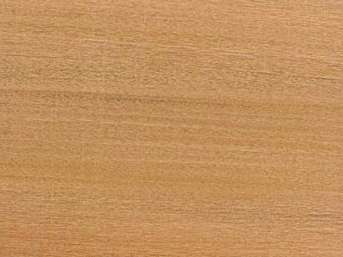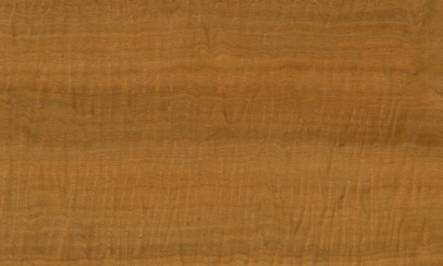   
White Peroba (Paratecoma peroba)
Family: Bignoniaceae
Common names: Edelteak, Ipe, Ipe claro, Ipe de bahia, Ipe peroba, Ipe rajado, Iperoba, Moah wood, Pau peroba, Peroba, Peroba amaralla, Peroba amarella, Peroba blanca, Peroba branca, Peroba branco, Peroba de campos, Peroba do campo, Peroba jaune, Peroba manchada, Peroba manchado, Peroba parda, Peroba reseca, Peroba rosa, Peroba tigre, Peroba tigrinha, Peroba tremida, Peroba verdadeira, Peroba verdaderira, Perobinha, Perobinha do campo, White peroba
Distributed in: Brazil (Latin America)
Distribution overview: The growth range of the species includes the Rio Doce area of coastal Brazil at altitudes of below 160 feet (50 m).
Common uses: Baskets, Bedroom suites, Boat building (general), Boat building: decking, Boat building: framing, Building materials, Cabinetmaking, Chairs, Chests, Concealed parts (Furniture), Cooperages, Decks, Decorative veneer, Desks, Dining-room furniture, Domestic flooring, Door, Dowell pins, Dowells, Drawer sides, Excelsior, Factory flooring, Figured veneer, Fine furniture, Floor lamps, Flooring, Food containers, Furniture , Furniture components, Furniture squares or stock, Furniture, Hatracks, Heavy construction, Joinery, Kitchen cabinets, Light construction, Living-room suites, Marine construction, Office furniture, Paneling, Parquet flooring, Planks, Plywood, Poles, Radio - stereo - TV cabinets, Roofing, Rustic furniture, Shipbuilding, Stools, Structural work, Sub-flooring, Tables , Tables, Utility furniture, Vats, Vehicle parts, Veneer, Veneer: decorative, Wardrobes
Product sources: White peroba has once enjoyed the position as the most popular timber tree of the Rio de Janeiro area for fine furniture and interior trim, but it is now almost extinct.
Environment profile: Data source is Nature Conservancy
The species is critically imperiled globally because of extreme rarity or because of some factor or factors that render it especially vulnerable to extinction. White peroba occurs in very small numbers globally (typically 21 or fewer occurences), and there are very few remaining individual trees or acres of trees
Tree size: Trunk diameter is 200-250 cm
Colors: the heart isYellow, Yellow to golden-yellow to orangeand the sapwoodYellow, Yellowish.The grain isWavy, the textureMediumand the lusterMedium
Natural durability: Susceptible to insect attack, Very durable
Odor: No specific smell or taste
Kiln Schedules: US=T3D2/T3D1
Drying Defects: Slight end splitting, Slight surface checking
Ease of Drying: Easy
Tree Identification: Bole/stem form is straight
Comments: General finishing qualities are rated as good
Blunting Effect: Blunting effect on machining is fairly severe
Boring: Responds well to boring
Carving: Easy to carve
Cutting Resistance: Easy to saw
Gluing: Good gluing properties
Mortising: Easy to mortise
Moulding: Good moulding properties
Movement in Service: Good moulding properties
Planing: Ease of planing is moderate
The material is generally easy to work, but quartersawn surfaces may require some care in planing
Resistance to Impregnation: Heartwood is resistant
The material is rather resistant to impregnation
Response to hand tools: Easy to machine
Routing recessing: Good routing characteristics
Sanding: Good sanding properties
Veneering qualities: Veneers easily, Veneers moderately easy
Steam bending: Poor
Turning: Easy to turn
Polishing: Good; Staining: Finish is generally good
;
- Numerical data Metric
- Numerical data English
- Strength properties
- References
 |
 |
 |
 |
| Item |
Green |
Dry |
Metric |
| Specific Gravity |
0,57 |
0,59 |
|
| Density |
|
737 |
kg/m3 |
| Bending Strength |
778 |
1157 |
kg/cm2 |
| Crushing Strength |
425 |
632 |
kg/cm2 |
| Hardness |
|
736 |
kg |
| Impact Strength |
|
76 |
cm |
| Shearing Strength |
|
149 |
kg/cm2 |
| Stiffness |
105 |
124 |
1000 kg/cm2 |
| Tangential Shrinkage |
5 |
|
% |
| Radial Shrinkage |
3 |
|
% |
| Weight |
737 |
576 |
kg/m3 |
| Maximum Load |
0,35 |
0,56 |
cm-kg/cm3 |
| Toughness |
|
368 |
cm-kg |
| Static Bending |
|
|
kg/cm2 |
|
 |  |  |  | | Item | Green | Dry | English | | Bending Strength | 11067 | 16469 | psi | | Density | | 46 | lbs/ft3 | | Hardness | | 1624 | lbs | | Impact Strength | | 30 | inches | | Maximum Crushing Strength | 6047 | 9001 | psi | | Shearing Strength | | 2123 | psi | | Stiffness | 1497 | 1764 | 1000 psi | | Toughness | | 320 | inch-lbs | | Work to Maximum Load | 5 | 8 | inch-lbs/in3 | | Specific Gravity | 0.57 | 0.59 | | | Weight | 46 | 36 | lbs/ft3 | | Radial Shrinkage | 3 | | % | | Tangential Shrinkage | 5 | | % | | Volumetric Shrinkage | 9 | | % | |
Density (dry weight) = 46-52 lbs/cu. ft. 0
Max. crushing strength = high 0
Shrinkage, Radial = small 1
Bending strength (MOR) = medium 1
Shrinkage, Tangential = small 0
Hardness (side grain) = medium
Shrinkage, Tangential = moderate
Shearing strength (parallel to grain) = medium
Bending strength (MOR) = high
Modulus of Elasticity (stiffness) = low
Max. crushing strength = medium
Density (dry weight) = 38-45 lbs/cu. ft.
Shrinkage, Volumetric = small
Modulus of Elasticity (stiffness) = medium
Shrinkage, Radial = moderate
Shrinkage, Volumetric = moderate
Shrinkage, Radial = very small
Toughness-Hammer drop (Impact Strength) = low
Work to Maximum Load = very low
Weight = very heavy
Shrinkage, Tangential = large
Shrinkage, Tangential = fairly large
Shrinkage, Radial = large
Shrinkage, Radial = fairly large
Shearing strength (parallel to grain) = high
Density = high
The bending strength of air-dried wood of the species is similar to that of Teak, which is considered to be strong. It has superior properties in compression parallel to grain in the air-dry condition than Teak, White oak, or Hard maple. It is fairly hard, resisting wear, denting, and marring fairly well
Berni, C.A., Bolza, E., Christensen, F.J.,1979,South American Timbers - The Characteristics, Properties and Uses of 190,Species,C.S.I.R.O Div. Building ResearchBolza, E.,1976,Timber and Health,Div. Building Res. C.S.I.R.O. AustraliaBoone, R.S., C.J. Kozlik, P.J. Bois, E.M. Wengert. 1988. Dry Kiln Schedules for Commercial Hardwoods - Temperate and Tropical. USDA, Forest Service, General Technical Report FPL-GTR-57, Forest Products Laboratory, Madison, Wisconsin.Brazier, J.D.,1975,Properties and uses of Brazilian woods,Journal of the Institute of Wood Science,7(2,pp50-57Brown, W.H.,1969,Properties and uses of Tropical hardwoods in the United Kingdom. Part 1,Nonstructural properties and uses.,Conference on Tropical hardwoods SC-5/TN-5, Syracuse UniversityBrown, W.H.,1978,Timbers of the World, No. 2 South America,TRADA, Red Booklet SeriesChudnoff, M.,1984,Tropical Timbers of the World,U.S.A. Department of Agriculture, Forest Service, Forest Products,Laboratory, Madison.Clifford, N.,1953,Commercial Hardwoods - Their Characteristics Identification and,Utilization,Sir Isaac Pitman & Sons Ltd. LondonCox, H.A.,1939,A Handbook of Empire Timbers,Forest Products Research Laboratory, Princes RisboroughFarmer, R.H.,1972,Handbook of Hardwoods,HMSOForests Products Research Laboratory, U.K.,1956,A Handbook of Hardwoods,Forest Products Research Laboratory, Princes Risborough, Department of,Science and Industrial Research, Building Research EstablishmentFrance - C.T.F.T.,1973,Investigations and Tests carried out on Tropical Timber by several,Research Laboratories,CTFTGerry, E.,1954,Ipe Peroba/Peroba do Campo - Paratecoma peroba,U.S.A. Department of Agriculture, Forest Service, Forest Products,Laboratory, Madison Info. Leaflet - Foreign Woods Report 2000Harrar, E.S.,1942,Some Physical Properties of Modern Cabinet Woods 3. Directional and Volume,Shrinkage,Tropical Woods,9(71, pp26-32HMSO. 1981. Handbook of Hardwoods, 2nd Edition. Revised by R.H. Farmer, Department of the Environment, Building Research Establishment, Princes Risborough Laboratory, Princes Risborough, Aylesbury, Buckinghamshire.Howard, A.L.,1948,A Manual of Timbers of the World.,Macmillan & Co. Ltd. London 3rd ed.Kukachka, B.F.,1970,Properties of Imported Tropical Woods,Forest Research Paper FPL 125Lavers, G. M.1966.The Strength Properties of Timbers.Forest Products Research Bulletin, No. 50.Ministry of Technology, Her Majesty's Stationery Office, London.Lavers, G.M.,1983,The Strength Properties of Timber (3rd ed. revised Moore G.L.,Forest Products Research Laboratory, Princes Risborough, Building Research,Establishment Report (formerly Bulletin No.50)Mainieri, C., Pereira, J.A.,1965,Madeiras do Brasil,Anuario Brasileiro de Economia Florestal,17(17,PP135-416Mainieri, C.,1978,Fichas de Caracteristicas das Madeiras Brasileiras,Inst. Pesquisas TechnologicasPatterson, D.,1988,Commercial Timbers of the World, 5th Edition,Gower Technical PressRecord, S.J., Hess, R.W.,1940,American Woods of the Family Bignoniaceae,Tropical Woods,8(63,pp 9-38Record, S.J., Hess, R.W.,1943,Timbers of the New World,Yale University PressRecord, S.J., Mell, C.D.,1924,Timbers of Tropical America,Yale Univ. PressRecord, S.J.,1931,Notes on Brazilian Timbers Hudoke and Macawood,Tropical Woods,4(27,pp14-5Redding, L.W.,1971,Resistance of Timbers to Impregnation with Creosote,Forest Products Research Laboratory, Princes Risborough, Building Research,Establishment Bulletin No.54 pp.43Rendle, B.J.,1969,World Timbers (3 Vols.,Ernest Benn Ltd. LondonRizzini, C.T.,1978,Arvores e Madeiras Uteis do Brasil: Manual de Dendrologia Brasileira,Editora Edgard Blucher LTDA BrazilSao Paulo - Instituto de Pesquisas Tecnologicas,1956,Tabelas de Resultados obtidos para Madeiras Nacionais,Inst. Pesq. Tec. Sao Paulo, Brazil Bol., No.31(2nd Ed.)Smith, D.N.,1959,The Natural Durability of Timber,Forest Products Research Laboratory, Princes Risborough, Building Research,Establishment Record,No.30Takahashi, A.,1975,Compilation of data on the Mechanical Properties of Foreign Woods (Part 2,Central and South America,Shimane University, Japan, Research Report on Foreign Wood No.4Timber Development Association Ltd.,1955,World Timbers (3 Vols.,Timber Development Association Ltd.Titmuss, F.H.,1965,Commercial Timbers of the World,Technical Press Ltd., London, 3rd editionTropical Woods,1968,Madeiras Comercias Brasileiras,Inst. Pesq. Tec. Sao Paulo Brazil Publ.,857U.S.D.A. Forest Service,1952,Foreign Woods Imported into the U.S.,F.P.L. Madison Rep., No. R1903-12U.S.D.A. Forest Service,1974,Wood Handbook,U.S.A. Department of Agriculture, Forest Service Handbook,72Woods, R.P.,1949,Timbers of South America,TRADA, Red Booklet SeriesWood, B., Calnan, D.,1976,Toxic Woods,British Journal of Dermat 94 Suppl. 13
|











